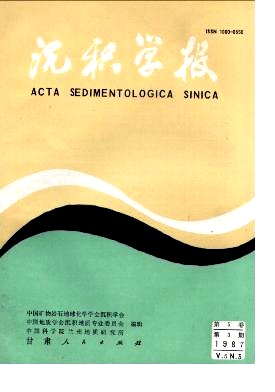PALEOGEOGRAPHY OF QINLING FLYSCH AND RELATION TO PLATE TECTONICS
- Publish Date: 1987-09-10
Abstract: A flysch belt of E-W trend sedimented from late Paleozoic to early Mesozoic, outcrops in the Qinling Mountains. The following evidences support that the flysch deposited on active margin north of the Yangtze Plate; 1 ) the flysch belt is now located south to the suture zone of Yangtze and North China Plates; 2 ) the strata conformably underlying the flysch are all characterized by lithofacies and fossils of the Yangtze type; 3 ) paleocurrent data ( from N to S ) show that there was an ancient source area for detritus in the north of the flysch belt, which is represented now by remnent blocks of mobilized basement; 4) pyroclastics in the flysch mean that the source area might be a series of islands related to southward plate subduc-tion. It should be noted that north inclined structures now in Qinling resulted from southward overthrust. A reasonable explanation for the phenomenon is plate flip: before T2, oceanic crust of the paleotethys north to the Yangtze Plate subducted southward, resulting in an active continental margin; after T2, while the paleotethys was entirely consumed, the North China Plate behind the oceanic crust overthrust onto the Yangtze Plate, resulting in the building up of nowadays Qinling.
| Citation: | Wang Qingchen. PALEOGEOGRAPHY OF QINLING FLYSCH AND RELATION TO PLATE TECTONICS[J]. Acta Sedimentologica Sinica, 1987, 5(3): 180-180. |






 DownLoad:
DownLoad: